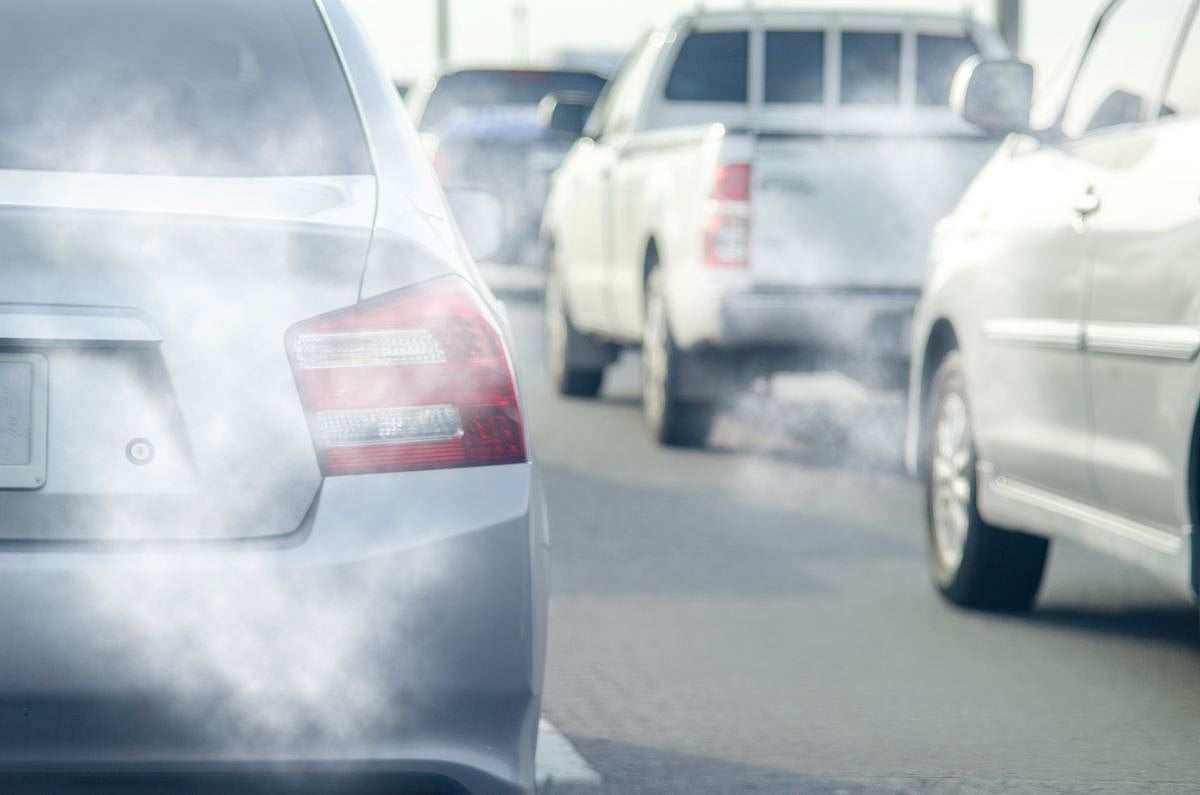Get Healthy!

- Posted October 6, 2025
Air Pollution Particles Hitch A Ride On Red Blood Cells, Into Major Organs, Study Says
MONDAY, Oct. 6, 2025 (HealthDay News) — The tiny particles inhaled from air pollution stick to our red blood cells, hitching a ride to do damage throughout our bodies, a new small-scale study says.
These particles — produced by motor vehicles and industrial emissions — recently have been found in the brain and the heart, where they are linked to increased risk of disease, researchers said.
The new study provides the first glimpse into how those particles work their way into people’s major organs, according to findings published recently in the journal ERJ Open Research.
“In our bodies, red blood cells work by collecting oxygen from our lungs and delivering it throughout the body,” said lead researcher Dr. Jonathan Grigg, a professor of pediatric respiratory and environmental medicine with Queen Mary University of London in the U.K.
“With this set of experiments, we have shown that tiny air pollution particles are hijacking our red blood cells, meaning they can also travel almost anywhere in the body,” Grigg said in a news release. “We’re finding more and more evidence that air pollution particles are making their way into many different organs of the body and now we have clear evidence of how that could be happening.”
Air pollution particles typically are 2.5 microns or less in width, according to the U.S. Environmental Protection Agency. By comparison, a human hair is 50 to 70 microns wide.
For the new study, researchers recruited 12 adults who were asked to spend an hour standing next to a busy London street. The participants all carried a small device that measured the particle pollution in the air around them.
Blood samples showed an increase in the amount of pollution particles stuck to participants’ red blood cells after they spent their hour out by the busy road, researchers said.
On average, there were two to three times as much particle matter stuck to their red blood cells after an hour next to traffic, results showed.
In some, levels decreased after an hour but remained high for others, suggesting that people’s bodies might differ in how they filter out the pollution breathed in, researchers said.
All told, researchers calculated that around 80 million red blood cells could be assumed to be transporting pollution particles after a person spends an hour by traffic.
Eight of the volunteers later returned to repeat the experiment on a different day, while wearing a face mask designed to screen out particle pollution.
When people wore face masks, the amount of pollution particles found on their red blood cell did not increase after standing by a busy road. That shows wearing a filter mask reduces the amount of particle pollution a person inhales, researchers said.
“We were surprised to find how well an FFP2 face mask prevents these very tiny particles from reaching and attaching to blood cells,” Grigg said. FFP is a European standard for face masks, and an FFP2 provides about the same level of protection as N95 and KN95 respirators.
To confirm these findings, researchers exposed human red blood cells and mice to diesel exhaust in the lab.
The particles stuck easily to red blood cells from both humans and mice, and the more particles that researchers added, the more they found stuck to the cells.
Analysis of the particles found on blood cells showed that they contained iron, copper, silicon, chromium and zinc, which are produced by car exhaust, as well as silver and molybdenum produced by brake or tire wear, researchers said.
“This technique means we now have a relatively simple way to measure the amount of pollution entering the body, so now we can test out which factors might increase or reduce the problem,” Grigg said.
Ane Johannessen, chair of the European Respiratory Society’s expert group on epidemiology and environment, reviewed the findings.
The new study “sheds light on how these dangerous particles might be infiltrating every part of the body via the bloodstream,” she said in a news release.
“It also suggests we could lower the risk with the right protective face mask,” continued Johannessen, who was not involved in the study.
This could be beneficial for people who are vulnerable because they have a lung disease, or who cannot avoid spending time next to a busy road, she said.
“However, most of us cannot avoid being exposed to dangerously high levels of air pollution in our daily lives, so we need laws to dramatically lower air pollution and reduce the risk for everyone,” Johannessen concluded.
More information
The U.S. Environmental Protection Agency has more on particle pollution.
SOURCE: European Respiratory Society, news release, Oct. 2, 2025







